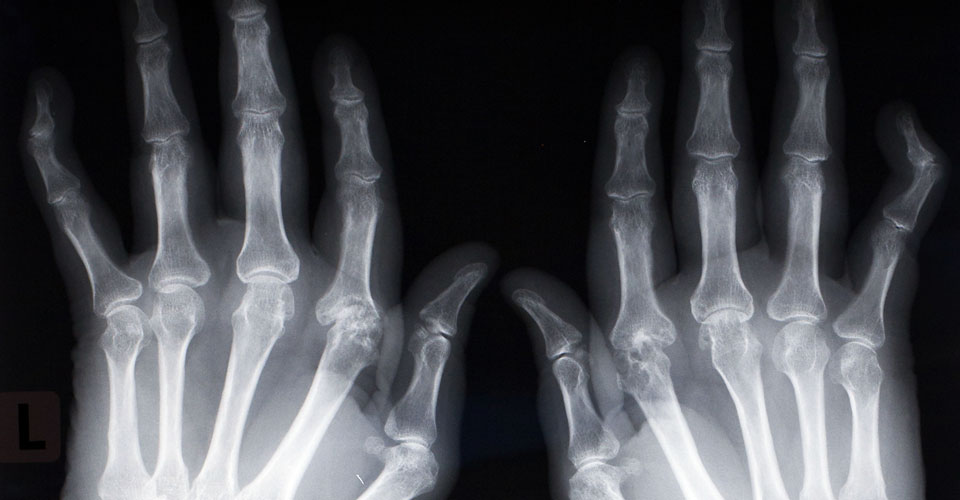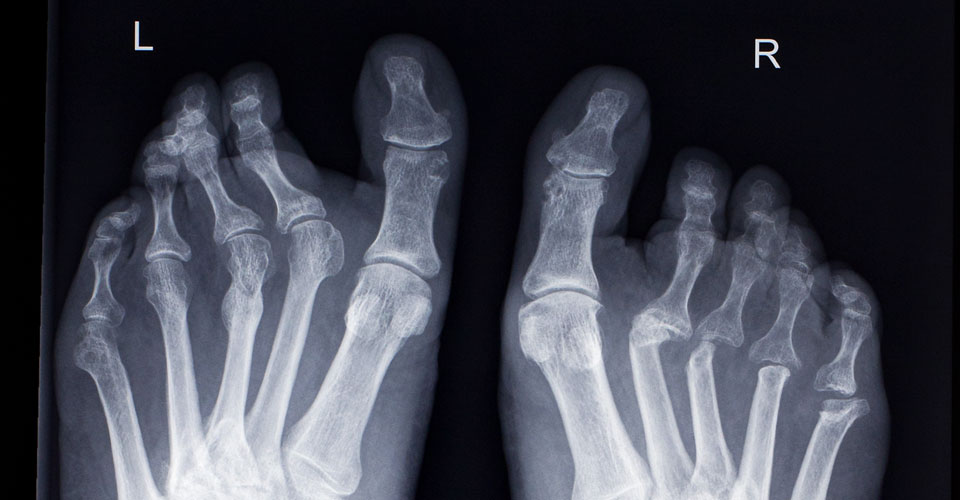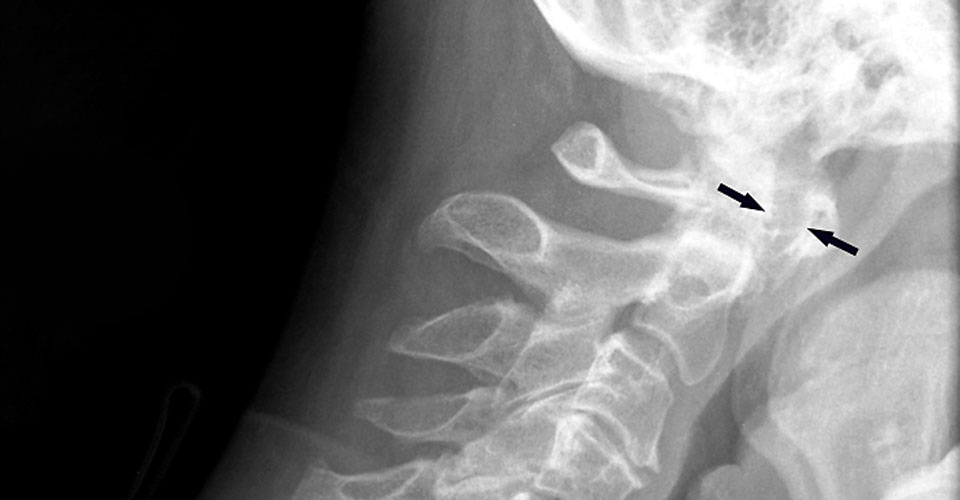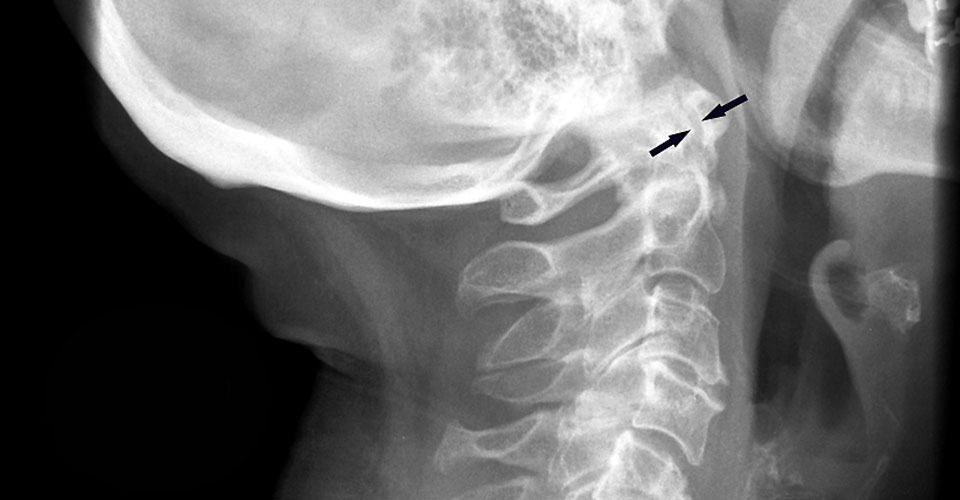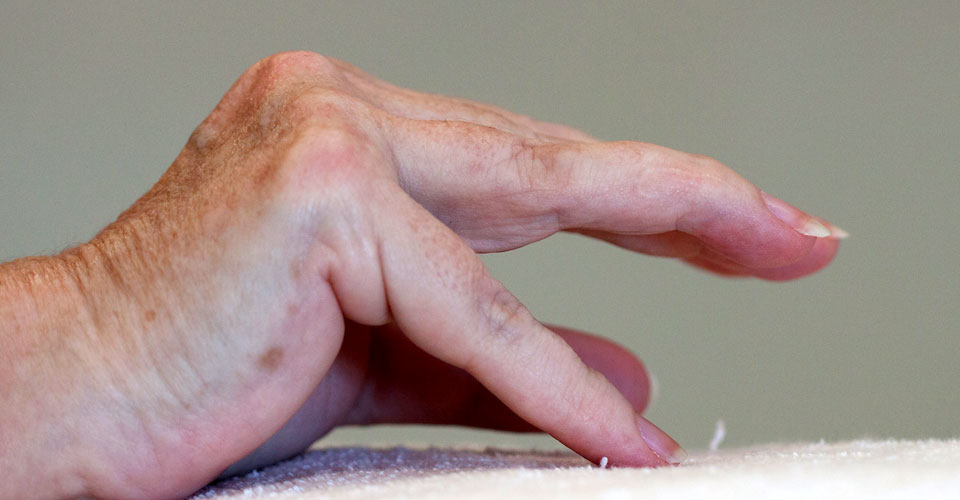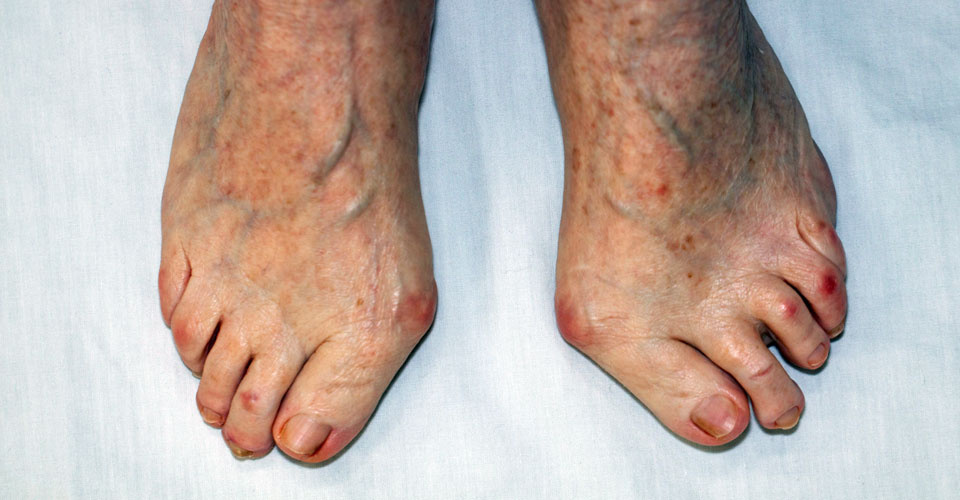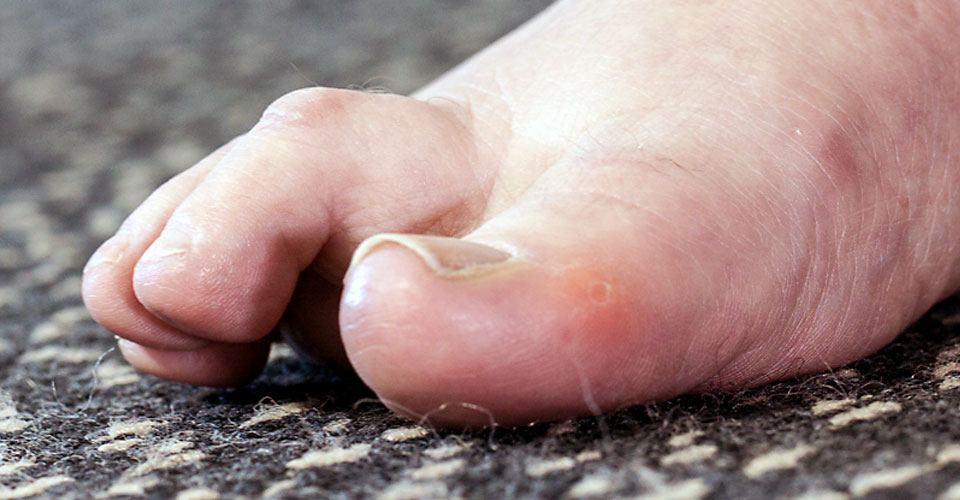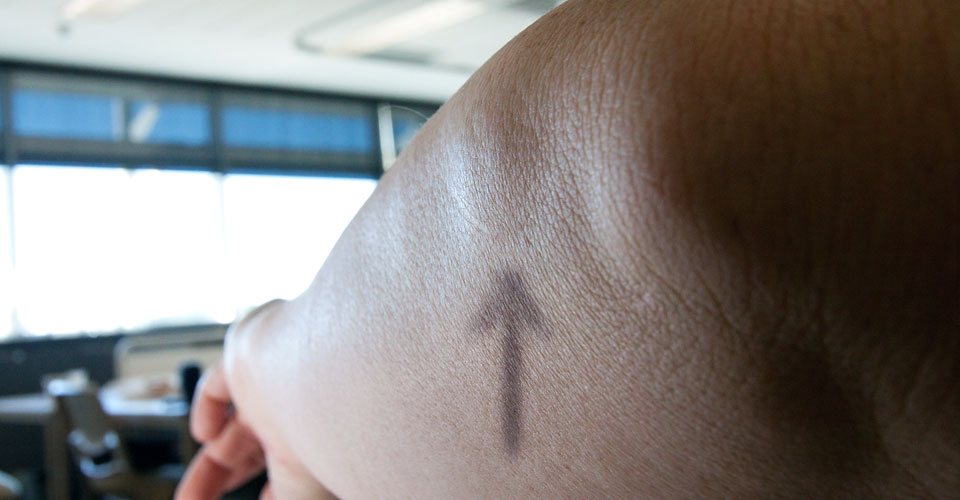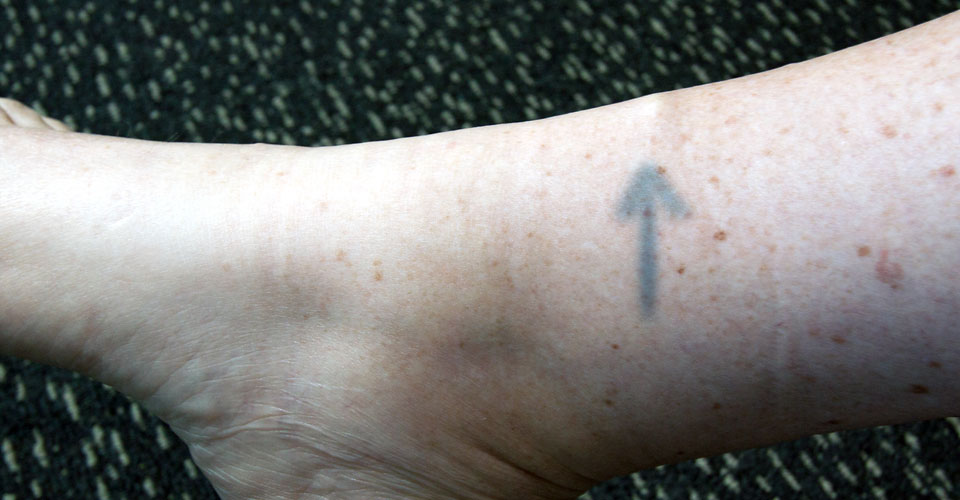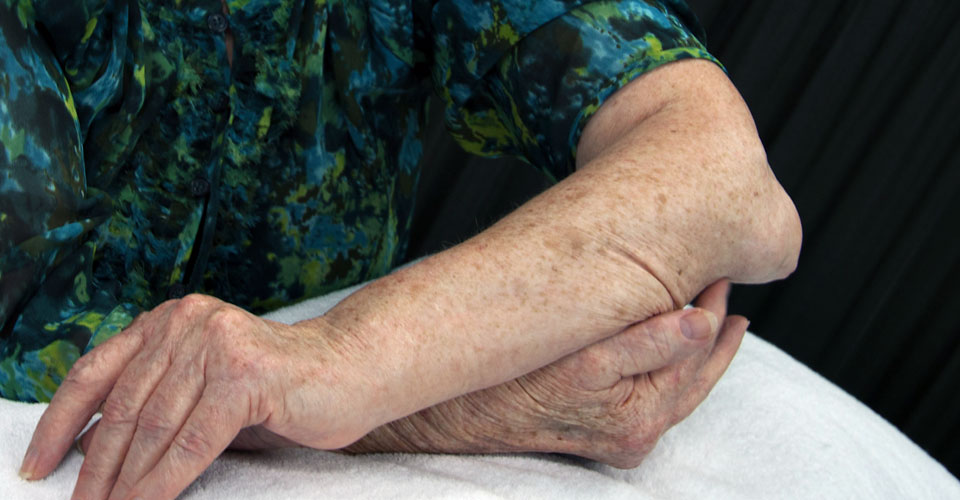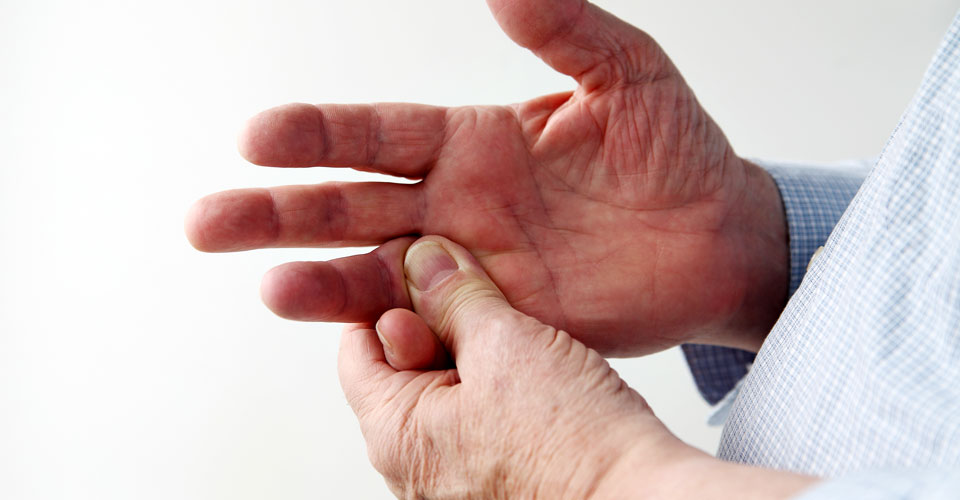
What is Rheumatoid Arthritis?
Rheumatoid arthritis (RA) is an autoimmune disease associated with systemic inflammation.
RA usually affects the smaller joints of the hands and feet, but can also affect larger joints such as the hips and knees. As well as the musculoskeletal system, RA can affect body systems and organs such as the lungs, heart, and eyes. Organ changes are most often the result of vasculitis and manifest as ischaemic changes.
Secondary manifestations of the systemic inflammation include degeneration of articular cartilage and subchondral bone, presenting as secondary osteoarthritis (OA), and degeneration of trabecular bone, resulting in bone fragility. Watch this video to learn more about the consequences of articular inflammation.
Practice point
Impairments in these systems and organs have important implications for physiotherapy practice and overall management of people who have RA.
Below you will see a range of joint erosion examples.
Why is rheumatoid arthritis a significant health problem?
RA is a progressive, chronic, systemic disease that can lead to substantial disability and increased mortality:
- RA affects about two per cent of the Australian population. RA is the most common autoimmune disease in Australia.
- RA is the second most common arthritis (after OA) and the most common inflammatory arthritis condition.
- The incidence of RA is most common between 25 and 50 years; that is during the peak income-earning years.
- There is a gender bias towards females of ~2.5:1.
In recognition of the substantial burden of disease associated with RA, it was identified as a National Health Priority Area in 2002. Importantly, the prevalence and cost associated with care for RA is expected to rise substantially in Australia. For more information refer to: the Rising Cost of Musculoskeletal Conditions in Australia and Everybody MOVE: Improving outcomes in musculoskeletal health.
RA is a National Health Priority Area in Australia and in the top 20 conditions associated with the greatest disability burden in Australia. For more information refer to: the Rising Cost of Musculoskeletal Conditions in Australia and Everybody MOVE: Improving outcomes in musculoskeletal health.
How does rheumatoid arthritis start?
While the cause of RA is unknown, multiple factors such as genetic and environmental influences have been linked with the onset. An unknown event or stressor is thought to trigger abnormal activity in the body's immune system, causing synovial tissue and adjacent structures to be affected. Cigarette smoking dramatically increases the risk of developing RA, as well as the risk of increased disease activity and mortality.
What is the impact of rheumatoid arthritis?
RA is associated with substantial personal and societal burden. Pain, disability and psychosocial consequences occur and depression is common. RA affects people during their peak income-earning and child-bearing years and its prevalence is expected to increase. Current and projected public health costs are substantial (e.g., government-subsidised drug therapies). People who live with RA may have reduced ability to work and often exit the workforce early, which results in reduced financial security.
The video below describes some individuals’ experiences of living with RA.
What are the main clinical features of early rheumatoid arthritis and how would you recognise them in practice?
Listen for:
- Significant and resolving fatigue.
- Insidious onset of joint pain, swelling and stiffness, or a feeling of joint ‘tightness’ resulting in functional limitations.
- Fluctuating pattern of joint pain, swelling and stiffness.
- Symmetrical pattern of joint involvement.
- Symptoms predominantly presenting in the small joints in hands and feet, plus or minus larger joints.
- Pain worse at night.
- Prolonged morning joint stiffness (~30 minutes) and stiffness after inactivity.
- Feeling of heat in the joints.
- Symptoms of malaise, fatigue and/or weight loss.
- Reports of a decline in functional ability.
- Triggers to onset. For example, a major life stress event.
- (Occasionally) fever.
Physiotherapists need to listen for features that may indicate RA. The videos below give examples of how a person may describe typical symptoms (e.g. stiffness, fatigue, swelling, flares, pain and extra-articular features) and the clinical signs that health practitioners need to be aware of and vigilant to.
Look for:
- Joint swelling, tenderness, heat and/or redness.
- Symmetrical pattern of joint involvement.
- Signs predominantly presenting in small joints in hands and feet plus or minus larger joints.
- Decreased active and passive joint range of movement.
- Functional impairment in hands and feet (fine and gross motor skills).
- Joint deformity (postural, subluxation, dislocation).
- Joint instability (e.g. disruption of ligamentous support).
- Joint degeneration - joint erosion may only be identifiable on MRI or CT.
- Bursitis.
- Tenosynovitis.
- Skin lumps (nodules), eye dryness or redness.
Common articular and peri-articular features associated with RA present clinically and may impact on function. For more information about articular and peri-articular features, download our articular and peri-articular features summary table and see our accompanying image slider below.
Extra-articular features also present clinically in several body systems. For more information about common extra-articular features, see Module 4.
What is the medical management for rheumatoid arthritis?
Current best practice for people with RA includes prompt symptom management and early implementation of disease modifying anti-rheumatic drugs (DMARDs) (within the first 12 weeks).
Practice point
Early diagnosis and appropriate medical treatment reduces disease activity, improving long-term outcomes. "Time to rheumatologist" is recognised as a key factor in disease progression, with decreased time leading to better clinical outcomes. Remission or low disease activity is now the reality for most people if seen early enough by a rheumatologist or other specialist physician.
Poorly controlled RA is associated with joint damage, reduced joint function and reduced quality of life. It is also associated with an increased risk of cardiovascular disease and death, reduced ability to participate in the workforce, increased need for joint replacement surgery and osteoporosis.
Pharmacologic management aims to relieve symptoms, and reduce disease progression and comorbidity risks. It is the mainstay of disease control and most effective when initiated early.
Early treatment with disease-modifying anti-rheumatic drugs (DMARDs) reduces joint destruction and disability and improves clinical outcomes. These medications are used to slow down disease progression and to relieve symptoms.
Practic point
Methotrexate is the most commonly prescribed conventional synthetic DMARD (csDMARD) for most individuals with RA.
Other pharmacological management includes:
- Corticosteroids (oral or intra-muscular routes)
- Other csDMARDs: hydroxychloroquine, sulfasalazine, leflunomide
- Biologic DMARDs (bDMARDs): tumour necrosis factor-α (TNF) inhibitors - originals and biosimilars; anti-CD20 – rituximab and biosimilar; interleukin-6 (IL-6) inhibitors; CTLA4-IgG fusion protein – abatacept
- Targeted sDMARDs (tsDMARDs)/small molecules: Janus kinase (JAK)-inhibitors
- Non-steroidal anti-inflammatories
- Analgesics
- Fish oil which has a mild anti-inflammatory effect at a dose of at least 2.7g of omega-3 per day, and it can take up to three months to achieve maximum effectiveness.
Disease activity needs to be monitored and medication adjusted accordingly for good disease control - this is known as 'treat to target'. Most people need to continue treatment indefinitely.
Other interventions include:
- Corticosteroid injections into joints, bursae, tendon sheaths
- Synovectomy
- Joint replacement
- Joint fusion
For further information on commonly used RA therapies in Australia, visit the Australian Rheumatology Association or Therapeutic Guidelines Limited.
What is my role as a physiotherapist if I suspect my patient has rheumatoid arthritis?
Your role as a physiotherapist is to:
- Recognise
- Assess and refer
- Co-manage
Below is an example of an individual with a long history of RA symptoms.
Recognise
Physiotherapists are often the first point of contact for individuals presenting with features consistent with RA.
Important
Early recognition of RA and on-referral to a medical practitioner is critical to optimise prognosis. The Early inflammatory Arthritis Detection Tool may be appropriate to help clinicians identify RA.
The European League Against Rheumatism (EULAR) outlines the criteria for diagnosing RA. Persons with at least one joint with definite clinical synovitis, where the synovitis is not better explained by another disease, are assessed against the criteria. The criteria assess joint involvement, symptom duration, serology and acute-phase reactants. For more information, download our EULAR guidelines table.
Physiotherapists are well placed to assess the joint involvement and symptom duration criteria. You can record the person's joint involvement using a joint count.
Assess and refer
Undertake a thorough musculoskeletal assessment and record findings as a baseline. Refer to a medical practitioner if there is the slightest possibility that the person has an inflammatory arthropathy - download our example referral letter template.
Assessment should take into account the relevant biopsychosocial factors and include:
- Standard instruments where possible. Several tools are available including:
- Clinical Disease Activity Index (CDAI)
- Disease Activity Score (DAS28)
- Patient Activity Scale
- Routine Assessment of Patient Index
- Simplified Disease Activity Index
- History of onset.
- Squeeze test across MCP and/or MTP joints. See the video below for an example.
- Joint swelling.
- Joint stability.
- Function.
- Muscle strength / atrophy (e.g. hand dynamometry). See video below for an example.
- Active and passive range of movement.
- Posture.
- Neurological assessment as appropriate.
Refer to Anderson et al for a systematic review of RA disease activity measures.
Practice point
The DAS28 is the assessment tool most commonly used in clinical practice in Australia.
The video below demonstrates the squeeze test across MCP joints of the hand and MTP joints of the foot.
Practice point
While there are a range of hand dynamometers available, many may be unsuitable for individuals with RA because of their hand deformities. A pneumatic dynamometer is usually appropriate and will increase the reliability of force measures.
The video below demonstrates a person’s left and right grip strength being tested. Muscle strength testing is important to evaluate functional capacity.
Co-manage
Co-manage means to manage in partnership with:
- the person with RA.
- other members of the person’s healthcare team.
The physiotherapist’s role is to:
- Adopt best practice principles of management (See Module 2 and Module 3). This should include education, exercise and self-management.
- Communicate with the healthcare team about a co-operative management plan.
International Care Standards
The National Institute for Health and Care Excellence (NICE) in the UK has produced an interactive flowchart for RA management in adults. The flowchart includes a disease overview, management and drug treatment. Users can click each box for further information and resources.
Additionally, the NICE quality standard contains seven quality statements. Healthcare professionals involved in managing RA should have the skills to deliver the actions and interventions outlined in the standard.
EUMUSC has developed standards of care, based on existing guidelines. These 16 standards outline the care that should be provided for people with RA. EUMUSC has also developed a checklist for individuals with RA, so they know what care they should receive. Refer to our resources section for a copy of the standards of care and checklist.
Summary
- RA is more than a musculoskeletal condition. It is a systemic, progressive autoimmune condition that affects synovial joints and other body systems.
- RA is associated with substantial personal and societal burden. People with RA may experience substantial disability and increased mortality.
- Early diagnosis and appropriate medical treatment reduces disease activity, improving long-term outcomes.
- As primary contact practitioners, physiotherapists have an important role in identifying the early features of RA and referring individuals for diagnosis and medical management.

